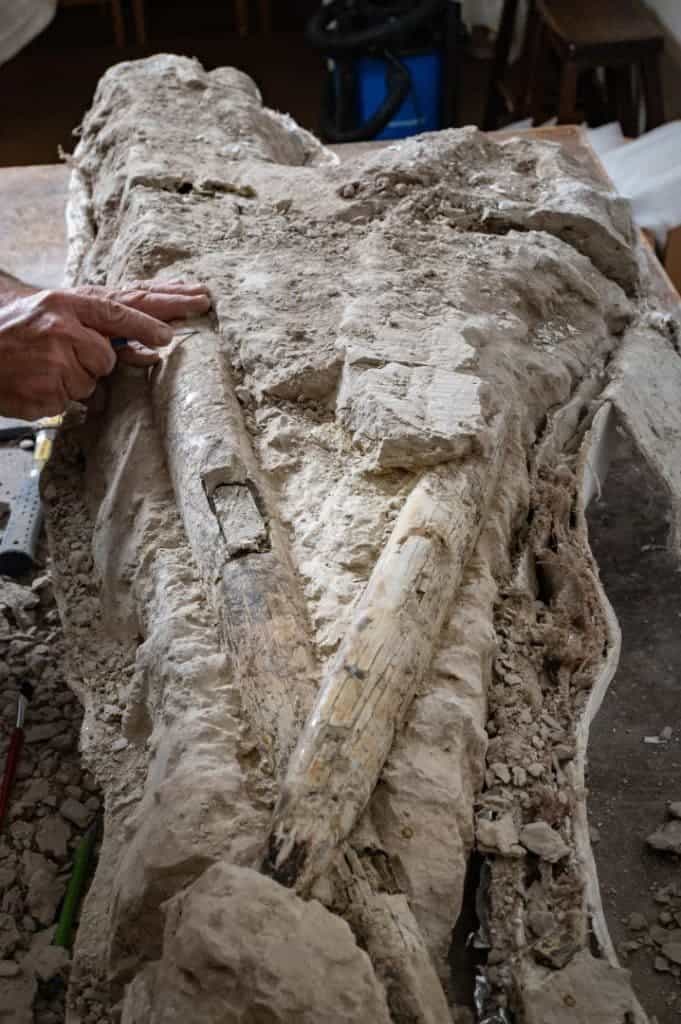A park ranger from California has made what’s being hailed as the ‘most significant’ fossil find in the state’s history.

Greg Francek, a ranger naturalist with the East Bay Municipal Utility District (EBMUD), a public utility district that provides water and sewage treatment services around San Francisco, has recently been on quite an adventure. While at work in the Mokelumne River watershed area — in the foothills of the Sierra mountains southeast of Sacramento — he stumbled upon an ancient, petrified woodland. Here, he found a treasure trove of fossils.
The findings include a superbly preserved mastodon skull and the remains of a 400-pound (181 kilograms) monster salmon.
A day at work
“I happened upon a petrified tree,” Francek said in a voice recording included in a statement from the EBUMD. “This tree was partially encased in the burial sediments, and because one end was exposed, I could actually see the tree rings inside.”
After realizing what he was looking at, Francek took a more careful look at his surroundings, finding several more petrified trees.
A few weeks later, he returned to the area for an additional survey. Further exploration of the area revealed the cache of vertebrate fossils.
Francek contacted paleontologists and geologists after discovering these specimens, who joined him at the site. After removing some of the rock and sediment, they discovered the tip of a pearly-white bone — which, eventually, turned out to be a well-preserved mastodon skull. After one more year of digging at the site, they uncovered hundreds of new animal specimens of a few dozen different species, and around 600 petrified trees in total.
Some of the most exciting vertebrate fossils discovered at the side, aside from the mammoth skull, are a giant salmon, an extinct camel (the size of a giraffe), and a gomphothere (an ancestor to modern elephants). Remains from rhinos, giant tortoises, horses, and other land creatures have also been discovered here. Given the sheer wealth of specimens here, the scientists who helped dig them out believe that they were deposited here by floods and debris from lava flow further inland.
The site dates back roughly 10 million years to the Miocene epoch, and is one of the most significant such troves ever discovered in the Golden State. During its day, the region would’ve looked a lot like a modern oak forest surrounded by the ocean. So far, they’re keeping the exact location a secret to prevent looting, but the mastodon skull will be put on display at the Gateway Science Museum later this fall.


